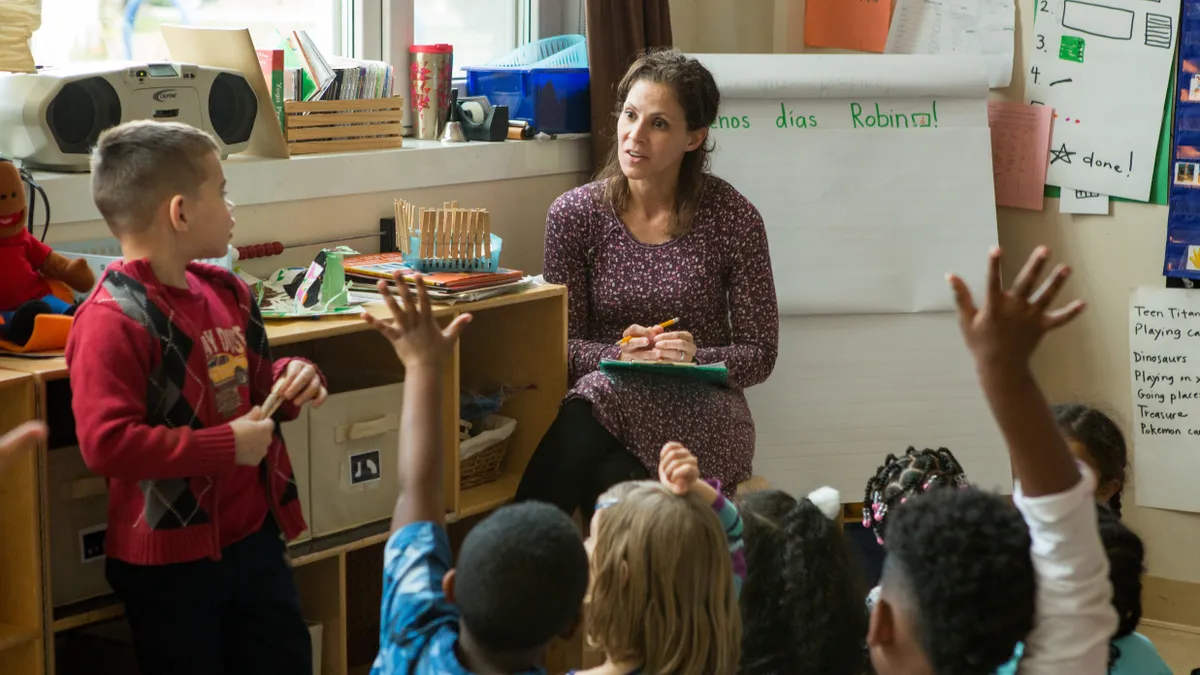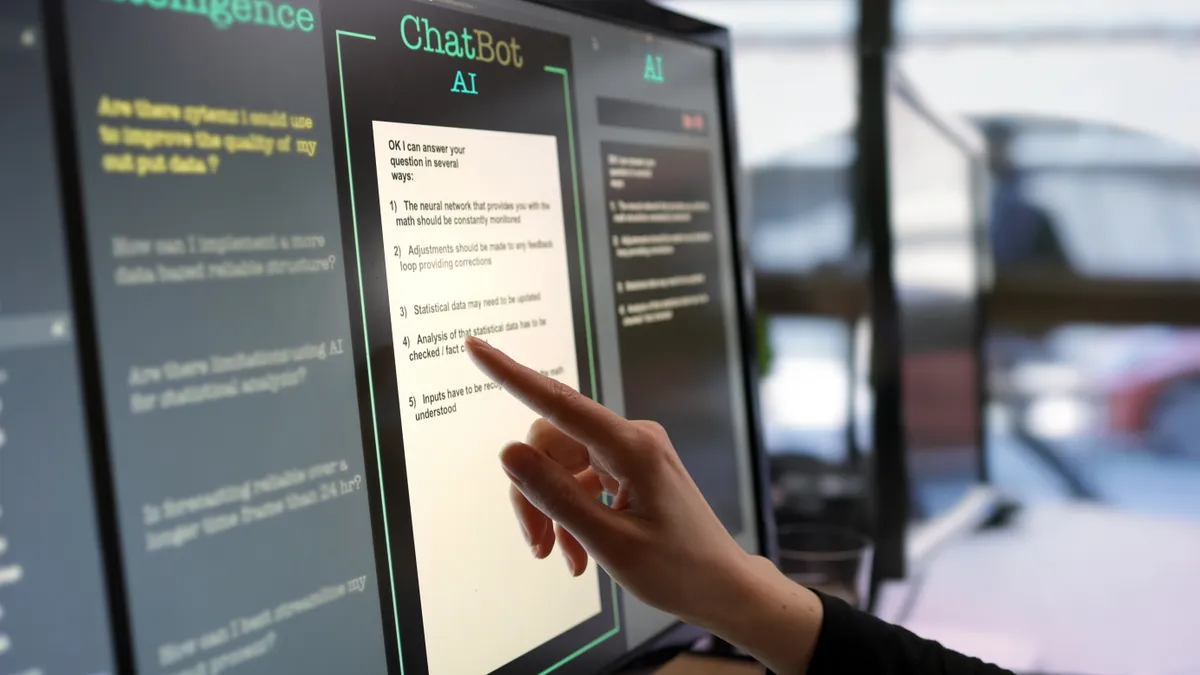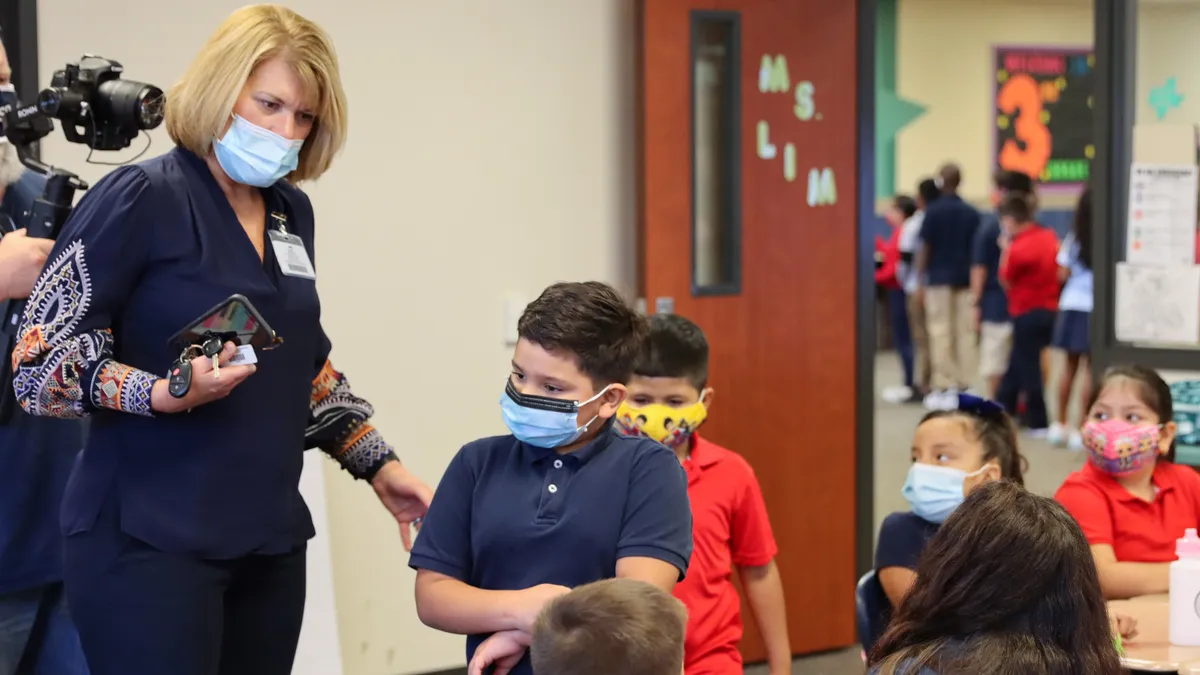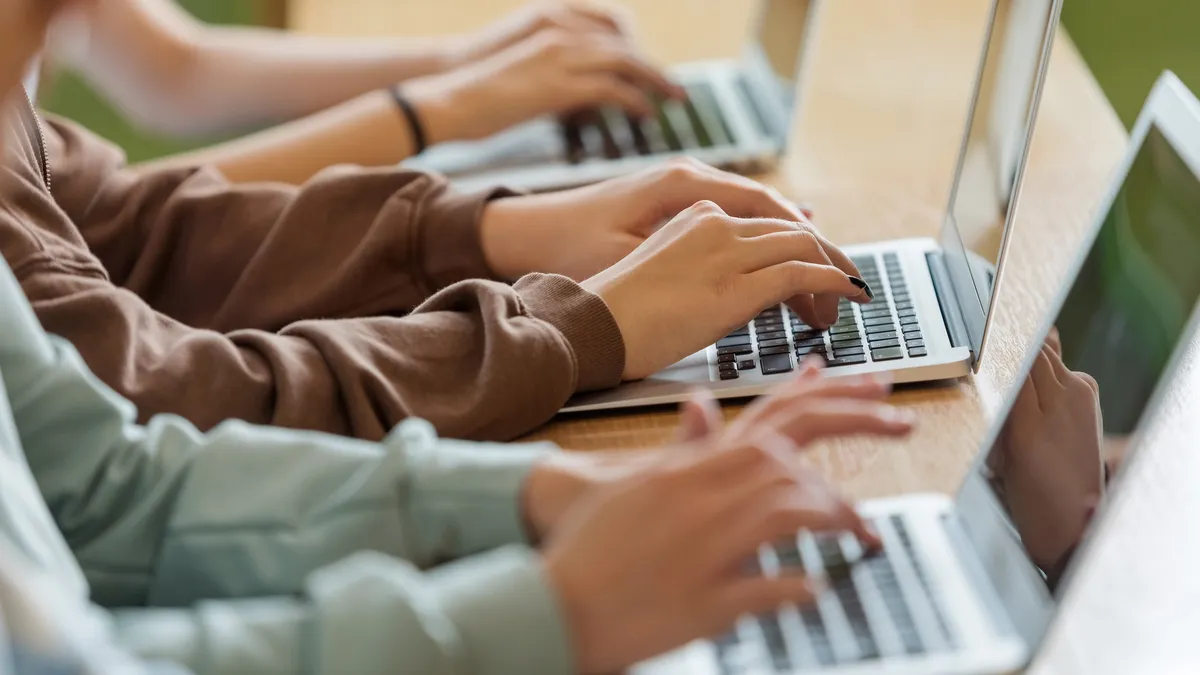Mandy Manning has walked the halls of many schools in the year since she was named 2018 National Teacher of the Year — and she often sees the same thing: students spread out, not talking with each other but looking at their devices.
Now back in the classroom as an English language development teacher and department lead in the Newcomer Center at Joel E. Ferris High School in Spokane, Washington, she is very interested in the role that social-emotional learning (SEL) plays in the ways students engage, whether they’re physically in front of each other or connecting online. It’s an area Manning calls digital civility.
“Being face-to-face helps us be more accountable with what we say and do,” Manning told Education Dive. “But online is anonymous, and we’re not held accountable. Sometimes we say and do terrible things because no one knows who we are, and we’re emboldened.”
The buffer the digital world puts between people can be bridged through SEL skills, according to Manning and other education experts, helping students remember the person at the other end of a digital connection.
Make a human connection
To Manning, human engagement — whether that’s two students sitting at the same table in class or texting each other through their devices after school — is about making a connection with someone else. That’s why she believes bringing SEL skills like social awareness and self-management into the online space can help students learn to approach those interactions the way they would in person.
She said it’s important for students to bring the same care to their online interactions, as these can impact the way they end up feeling at school or home.
“[Online] bleeds into our human interactions,” Manning said. “Because if I feel badly from something online, whether I am the victim or the perpetrator, it impacts our real life.”
Manning said SEL skills can be easily woven into class time without drawing too much attention to it by teachers or making students feel something “touchy-feely” is taking place. To her, the key is giving students a way to process their feelings and helping them feel heard, which can then piggyback into any interaction they have.
In a classroom of 8th-graders she visited, students were upset about something that had just happened during lunch. The teacher gave them time to talk about what they’d seen and give voice to their feelings, and the class was still able to finish the lesson with the students feeling heard.
“I’ve seen classrooms that have regular active meetings about the grade system or something that happened in classroom, and [they] talk about how that impacted themselves as a learner but also as a person,” Manning said. “They’re still talking about the content in the classroom but also the human connections.”
Think before you text
That human connection can get distorted online: Sometimes it’s lost, and sometimes it’s actually amplified.
For some students, a comment or text sent anonymously or even by one person can be interpreted as having more weight than it actually carries. An opinion sent by one person is just that — one thought. But in some cases, students give that message more meaning.
Maurice Elias refers to this as the “myth of the imagined audience.” A single negative tweet or email can all of a sudden feel like the world has weighed in, especially if that message stings. Elias believes by learning SEL skills, students can use some care before they send off a hurtful digital attack through their phone or computer.
“The main issue is for students to understand the process of how a device works and what goes into a communication (like how a bill becomes a law... how a thought becomes an email, tweet, post, etc.) and for students to have the SEL skills and character to allow them to consider carefully the impact of their communications upon others,” Elias, a professor of psychology at Rutgers University and director of the Rutgers Social-Emotional and Character Development Lab, told Education Dive via email.
Role-playing to demonstrate problematic scenarios
A proponent of digital tools, Alberti Center for Bullying Abuse Prevention Associate Director Stephanie Fredrick said social media can actually boost SEL skills, as children who spend time on their social networks “…often report higher levels of empathy and social support over time,” she told Education Dive by email.
There is a balance, however, which lies in how often students are online and in front of screens.
“We don’t want this behavior to replace in-person interactions or supports,” said Fredrick, who also serves as an assistant professor in the Department of Counseling, School and Education Psychology in the Graduate School of Education at the University at Buffalo, SUNY. “We want digital technology to complement offline relationships or provide opportunities for relationships that might not otherwise be there (e.g., due to distance).”
Fredrick recommends educators first bring digital citizenship and SEL skills into classrooms through free online resources such as those from Common Sense Education and Teaching Tolerance. Students should then be given time in class to model these tools, with teachers modeling them as well. This provides a template for students to use when engaging online.
Jennifer Kahn, research manager at the Ecological Approaches to Social Emotional Learning (EASEL) Lab at the Harvard Graduate School of Education, also suggested activities where students can role-play online scenarios while in the classroom, considering specific scenarios that may come up with their peers.
“For example, asking what does it feel like in person when someone says something mean or disrespectful,” she told Education Dive by email. “What do you think it would feel like online? The same or different?”
Manning acknowledges technology is not ever going to go away — nor would she want that to happen. But she hopes students learn to use it to engage in meaningful ways. Texting can’t replace two people sitting across a dinner table from each other, for example, but used empathetically, it can help students forge positive and healthy relationships in their personal and, eventually, working lives.
“It’s about using technology to help students make better connections,” Manning said.




















